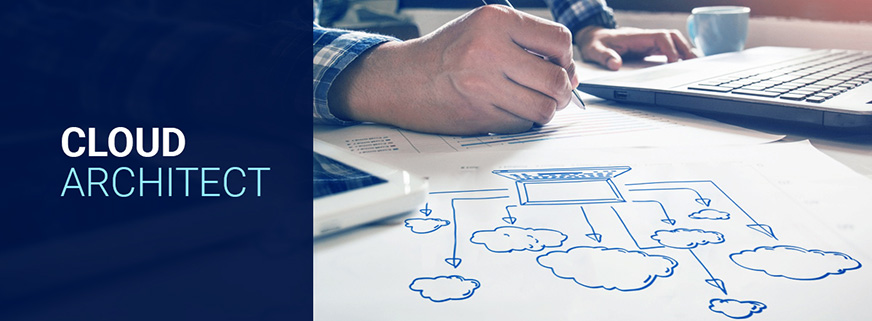Cloud solution architecture forms the backbone of modern IT infrastructure, offering scalability, flexibility, and cost-efficiency to organizations of all sizes. At its core, cloud architecture encompasses the design and implementation of cloud-based solutions that leverage computing resources, storage, and services provided by cloud service providers like Amazon Web Services (AWS), Microsoft Azure, and Google Cloud Platform (GCP).
Network Security and Perimeter Defense
Securing the network perimeter is essential in cloud environments, where data traverses across distributed networks and services. Architects should implement network security controls such as firewalls, intrusion detection and prevention systems (IDPS), and virtual private networks (VPNs) to monitor and protect network traffic. Additionally, they should adopt a zero-trust security model that assumes no implicit trust and verifies every request before granting access.
Automation and Infrastructure as Code (IaC)
Automation and Infrastructure as Code (IaC) streamline the deployment and management of cloud resources, enabling rapid provisioning, configuration, and scaling of infrastructure components. Architects should leverage tools like AWS CloudFormation, Azure Resource Manager, or Terraform to codify infrastructure deployments and maintain consistency, repeatability, and version control across environments.
Continuous Integration and Continuous Deployment (CI/CD)
Continuous Integration and Continuous Deployment (CI/CD) practices accelerate the delivery of cloud-based solutions, allowing organizations to iterate and release software updates with greater agility and efficiency. Architects should implement CI/CD pipelines that automate code integration, testing, and deployment processes, enabling faster time-to-market and reducing the risk of errors and downtime.
Cost Optimization
Cost optimization is a key consideration in cloud solution architecture, given the pay-as-you-go model of cloud services. Architects should implement cost-effective strategies to minimize cloud expenditures without sacrificing performance or functionality. This may involve rightsizing resources, leveraging reserved instances or spot instances, and implementing cost monitoring and budgeting tools to track and optimize spending over time.
Performance Optimization
Performance optimization is essential for ensuring that cloud-based applications meet performance requirements and deliver a superior user experience. Architects should design architectures that prioritize low latency, high throughput, and efficient resource utilization. This may involve optimizing network configurations, selecting appropriate instance types, and implementing caching and content delivery networks (CDNs) to reduce latency and improve responsiveness.
Hybrid Cloud Integration
Hybrid cloud architectures combine on-premises infrastructure with public and private cloud environments, offering organizations greater flexibility, scalability, and resilience. Architects should design architectures that seamlessly integrate on-premises and cloud resources, enabling workload portability, data synchronization, and hybrid cloud management. This may involve implementing hybrid cloud connectivity solutions such as VPNs, direct connections, or hybrid cloud storage gateways.
Multi-Cloud Strategy
Multi-cloud architectures leverage multiple cloud providers to distribute workloads across different cloud platforms, reducing vendor lock-in and enhancing resilience and redundancy. Architects should design architectures that support interoperability and portability across cloud environments, enabling seamless workload migration and workload placement optimization. This may involve implementing cloud-agnostic tools and technologies, such as Kubernetes or Docker, to orchestrate and manage workloads across diverse cloud infrastructures.
Serverless Computing
Serverless computing is gaining momentum as a paradigm for building scalable and cost-effective cloud-native applications. Architects should explore serverless architectures that leverage managed services and event-driven programming models to abstract infrastructure management and optimize resource utilization. This may involve adopting serverless platforms such as AWS Lambda, Azure Functions, or Google Cloud Functions to build and deploy serverless applications with minimal operational overhead.
Edge Computing
Edge computing is emerging as a transformative technology that brings computation and data storage closer to the point of use, enabling real-time processing and low-latency applications. Architects should design architectures that incorporate edge computing capabilities to support use cases such as IoT, edge AI, and immersive experiences. This may involve deploying edge computing infrastructure at the network edge, leveraging edge computing platforms, and implementing edge-native application architectures.
Conclusion
Cloud solution architecture continues to evolve in response to technological advancements, industry trends, and evolving business requirements. By embracing optimization strategies, hybrid and multi-cloud architectures, and emerging technologies like serverless computing and edge computing, architects can architect cloud solutions that drive innovation, agility, and competitive advantage for organizations. As organizations continue to embrace the cloud as a strategic enabler of digital transformation, the role of cloud architects remains pivotal in shaping the future of IT infrastructure and driving business success in the cloud era.





Comments